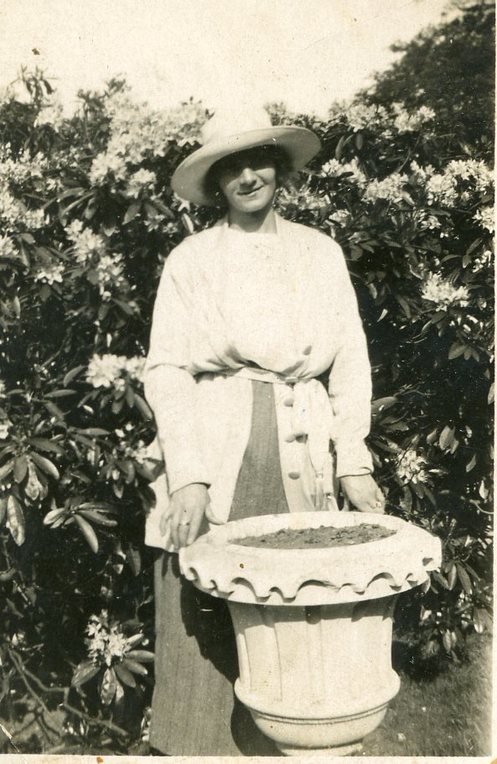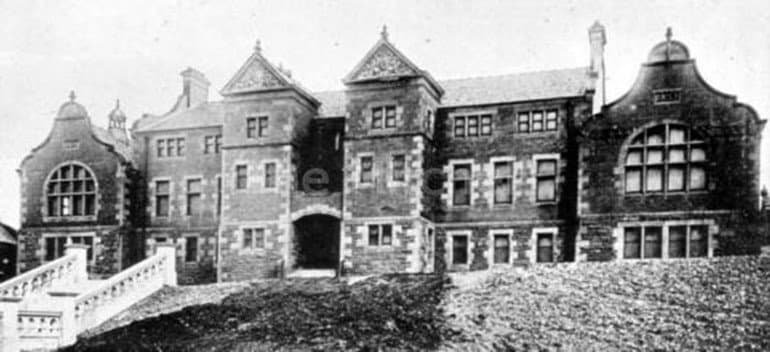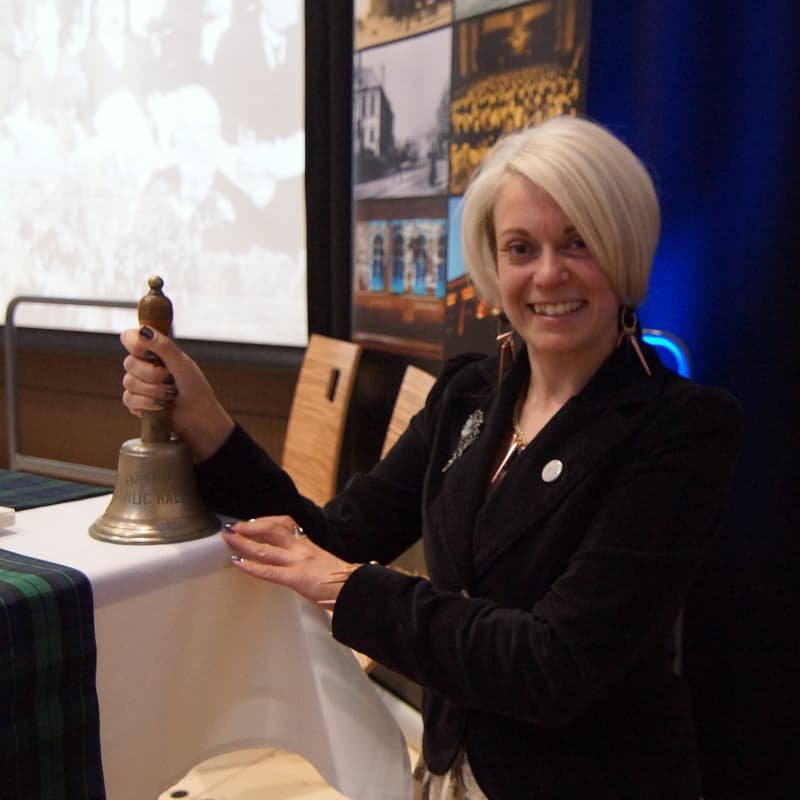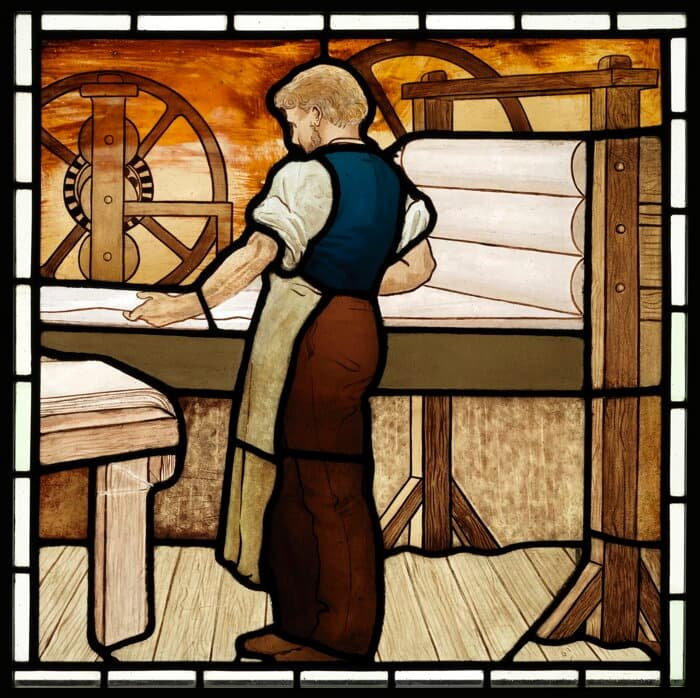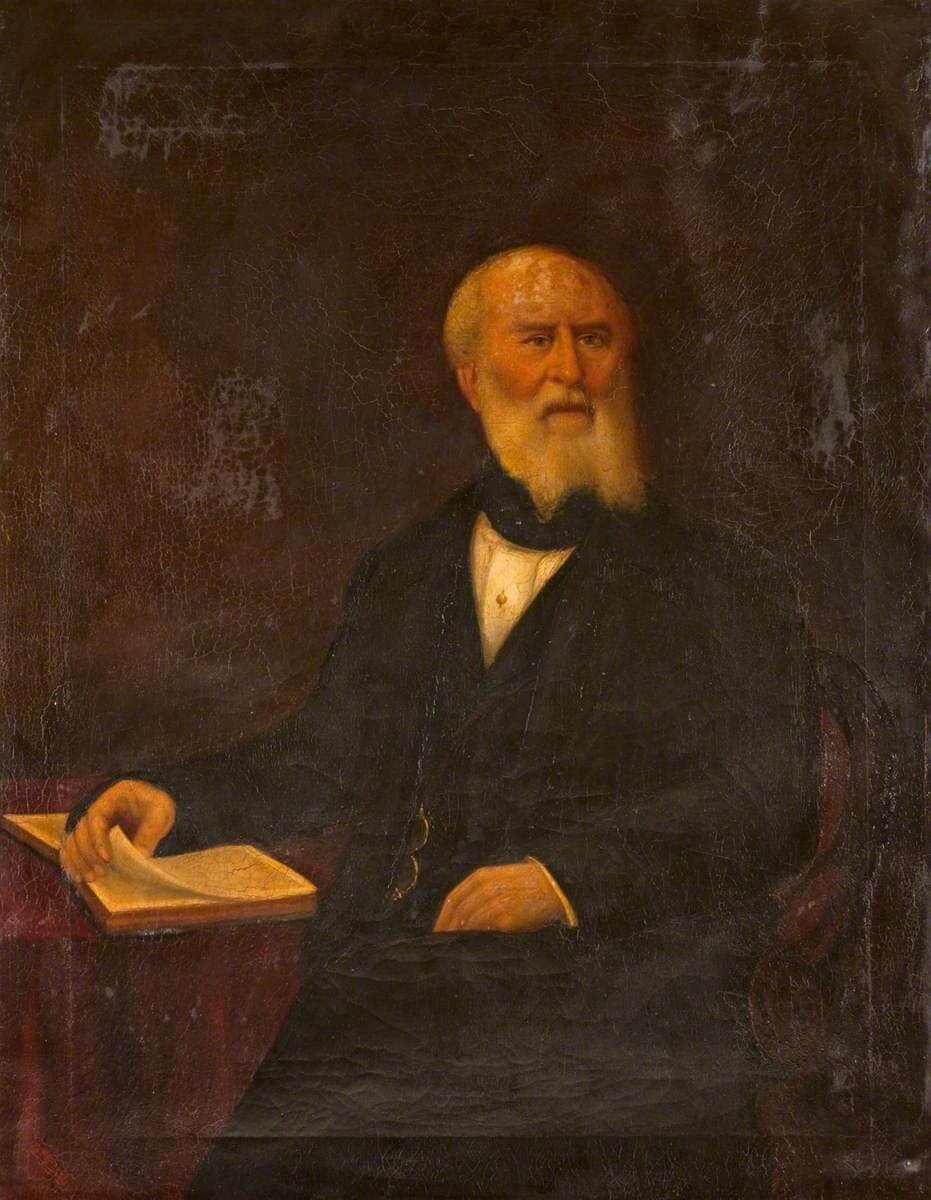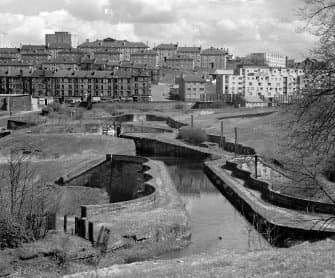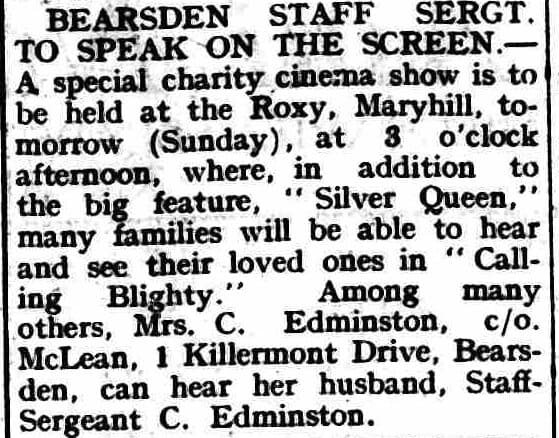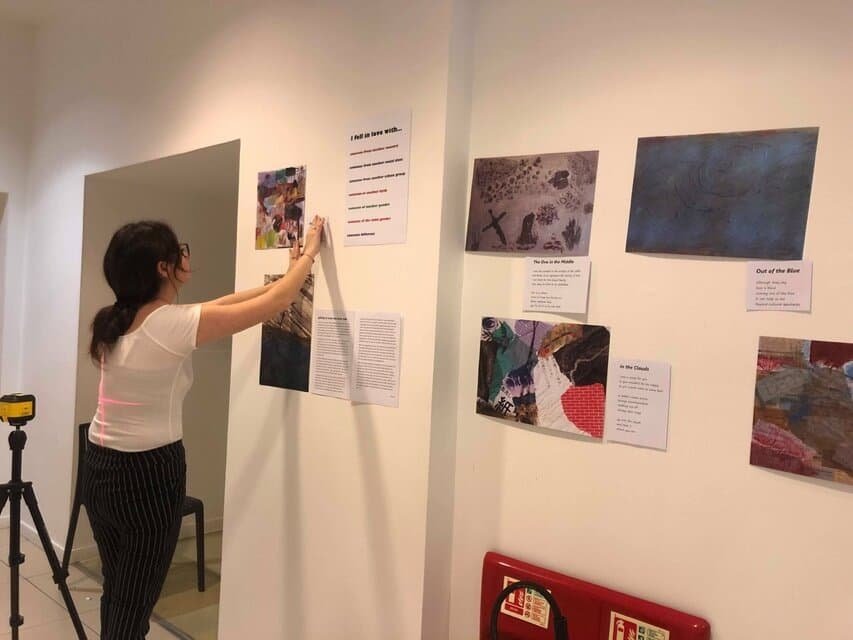Words by Elinor Abbott
Colina House or Collina Cottage?
Discover the mystery of Colina House - an exquisite property captured in family photos from the early 1900s. Follow our search for answers as we uncover the story of Maryhill's first provost, David Swan, and the possibility of his family's connection to the elusive Collina Cottage.
Stuart contacted Maryhill Burgh Halls, hoping we could help him find information on a cache of family photos showcasing early twentieth-century locations in Maryhill. These pictures had already undergone some research, which Stuart had done himself, aided by family mementoes and tokens.
The wedding invitation was particularly interesting to Stuart, which indicated the wedding was to take place at "Colina House". What was Colina House? And where was it? There were several photos of a bride standing in both the foyer and front steps of a large and nicely turned-out house. There was also a photo of a woman in a wide-brimmed hat, standing by a fountain at "Colina House". Stuart wondered if perhaps his family had worked in service, as he didn't think they had owned property back then. An old map he found indicated there was at one time, a building called "Collina" in Maryhill, where Collina Street is now.
Looking into the origin of Collina House, we discovered that Maryhill's first provost (similar to a mayor), David Swan, lived in a home called Collina Cottage, built around 1858. This home is described in an ordnance survey from that period as "A superior Cottage commanding a view of the whole of Maryhill." Could this be the same Collina House that Stuart's family's photos indicated?
Doing map regression work shows that Collina Cottage, the one built by the Swan's, remained on local maps until 1933, at which point it disappeared. Stuart's photos would have been taken around the late teens/early 1920s. Housing ownership records did not turn up anything which indicated to who the Swan's may have sold Collina Cottage to, as that family relocated to Perthshire around 1907. There is a document which states a "Janet Ferguson" owned Collina Cottage in 1895, but this may be the married name of Janet Swan, daughter of David Swan, it is hard to say. Collina was certainly an important name to the Swan family, shipbuilders, who built a ship called the Collina (also called the Corie) in 1862.
Looking closer at Stuart's photographs of his family in the early twentieth century, it was noted that they did not have the appearance of servants, they were smartly dressed in a number of photographs, particularly one in which they are crowded around Isabella S.B Dunlop (née Bryce), Stuart's great grandmother, outside a stately home, perhaps the same one from the wedding and fountain photographs.
Though it is generally more difficult to find information about women than men when looking at historical records, Isabella S.B Dunlop (1850-1927) left behind many clues and questions when it came to Collina House. Isabella's full name was Isabella Sloss Bryce Dunlop, but another name came up when looking into records of her death. The National Probate Index of Scotland (a probate is what gives someone the legal right to the estate of another person and exists separately from a will) shows that Isabella also went by the name "Colina" (one 'L'). She willed what would be about £3,600 to her eldest daughter, Mary, in today's money.
Isabella's husband had been a blacksmith who owned the "Dunlop Forge." Isabella was widowed in 1921 and documents from this time show that she owned property on Hill Street, now called Duncruin Street, not far from Collina Cottage. This property was a workshop and ground house, at which a number of people lived and from which her son, Thomas, ran his carriage and horseshoe business, "Thomas B. Dunlop & Co." Was she living elsewhere? Was she also perhaps the owner of what was Collina Cottage, now called Colina House? We are waiting for the 1921 census to be released so we can explore who was living where.
The Dunlop Forge, Hill St.
Thomas B Dunlop & Co carriage company.
Isabella's two daughters also worked. Annie, Stuart's grandmother, was a ladies mantle maker, a mantle being a type of overcoat, and one of the most impressive photos Stuart provided to Maryhill Museum was of Annie at work. Images of women at the time working are quite rare. Annie's younger sister, Isabella, also worked in textiles as a cutter of undergarments.
Tailor Workshop. Annie is in the first row, second one to the right.
Annie was married on December 31st, 1920 at 135 Burnhouse Street, there is still a church in this location. This is listed as 'residence' on the marriage certificate, but this is likely the residence of the church where they were married, though the images of Annie being married were taken at the mysterious "Colina House". Stuart related that family lore states that Annie's wedding celebration at Colina House went on for two days. It seems unlikely that the Dunlop family would be able to celebrate for two days anywhere besides their own home. So it becomes less plausible that the Dunlops rented Colina House for the wedding. Stuart also related a memory passed down through his family of Colina House, having a path for boats that stretched from the house down to a dock on the canal. This also indicates that the Dunlops may have come into possession of Collina Cottage, as the Swans were shipbuilders.
Colina/Collina is an unusual word. In the case of the Swan family, it could be used to indicate the location of "Collina Cottage", on top of a hill overlooking Maryhill, as the word "Collina" means hill in Italian. However, that is conjecture and we don't know if the Swan family spoke Italian or had connections to Italy. In the case of the Dunlops, did they purchase Collina Cottage and live there while owning property on Duncruin Street, which they rented out? Was Isabella S.B Dunlop connected to Collina Cottage in some other way? Born there, perhaps? Or was it simply a coincidence? Strange, however, to have two homes, "Collina Cottage" and "Colina House" so close to each other during the same period of time, as well as for Isabella to have acquired the nickname 'Colina'. It's possible that Isabella fancied the name "Collina" and named her own home after it and subsequently acquired it as a nickname.
When the 1921 census is released, we hope we can discover more!
If you have any information about Collina House, please get in touch! info@mbht.org.uk


